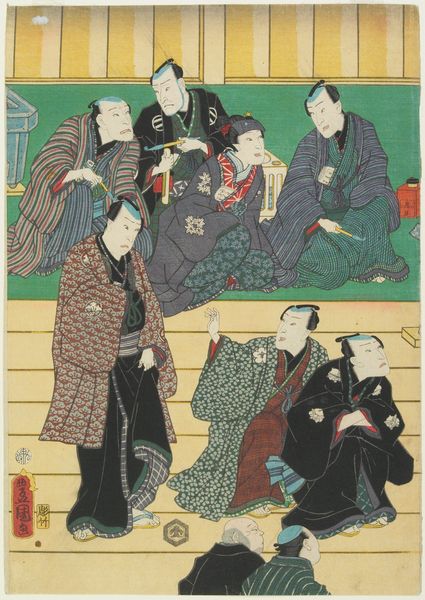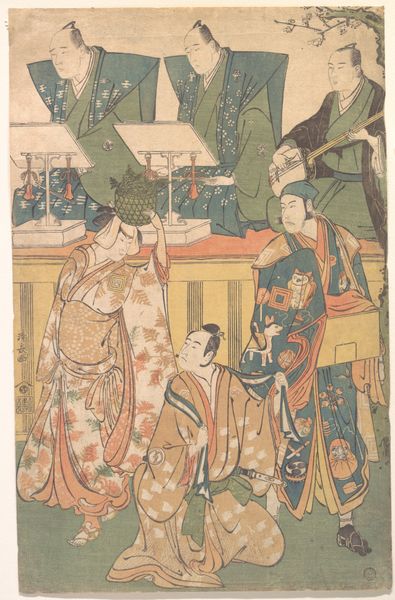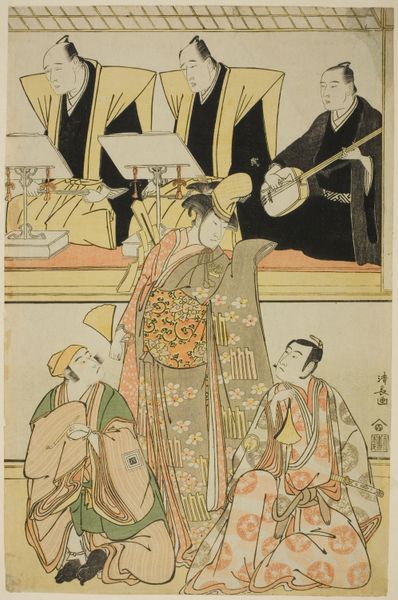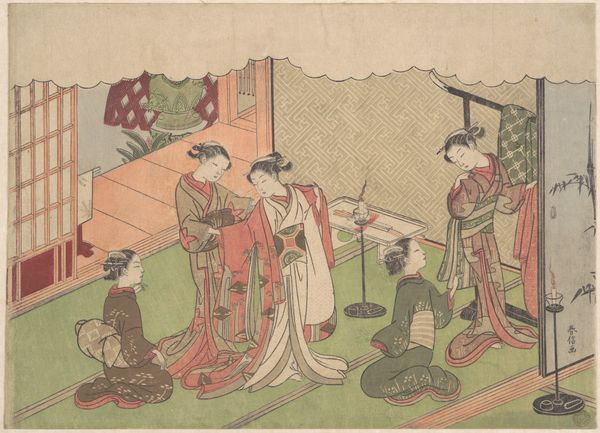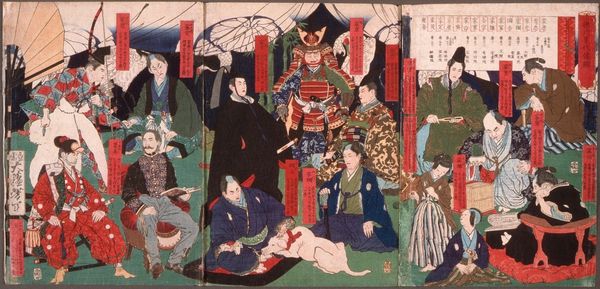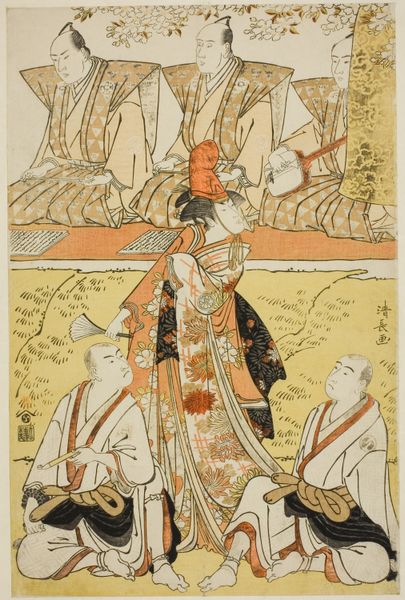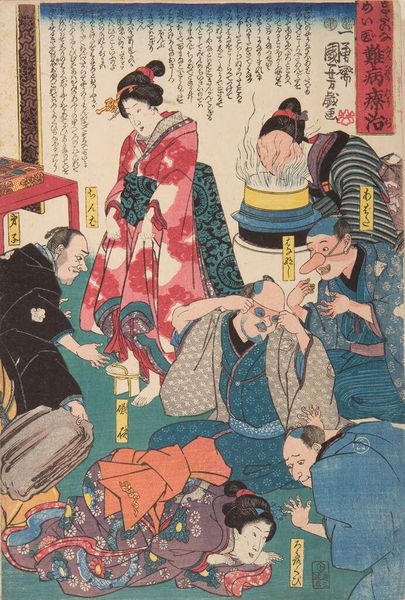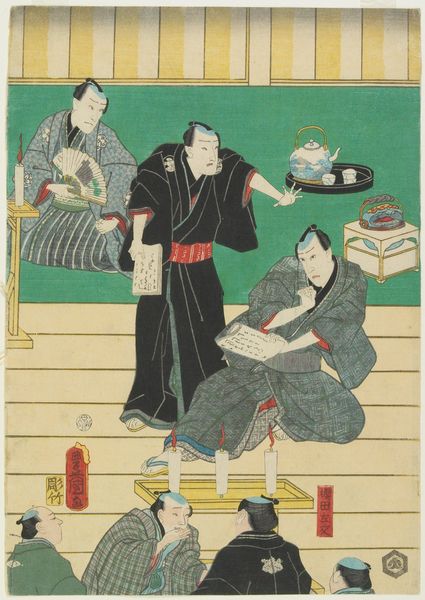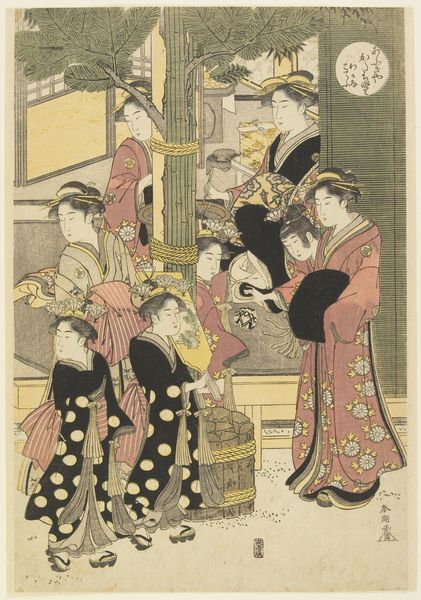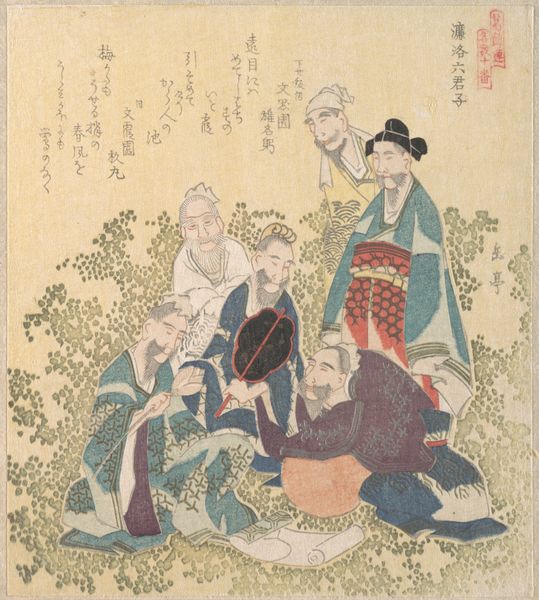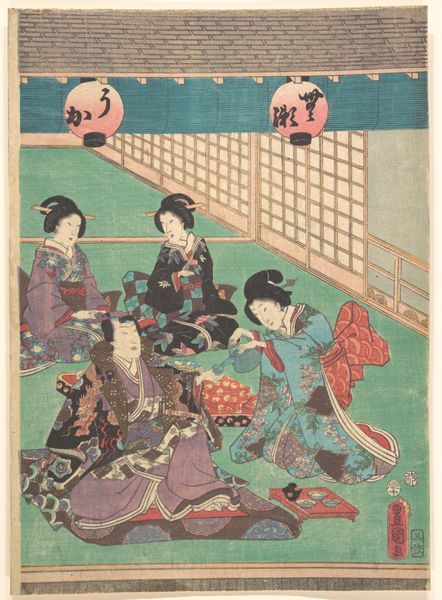
print, ink, woodblock-print
#
portrait
#
narrative-art
# print
#
asian-art
#
ukiyo-e
#
japan
#
figuration
#
ink
#
woodblock-print
Dimensions: 13 3/4 × 9 5/8 in. (34.9 × 24.5 cm) (image, sheet, vertical ōban)
Copyright: Public Domain
This color woodblock print, depicting the actor Ichikawa Danzō VI, was made by Utagawa Kunisada. The process of creating woodblock prints like this one was labor-intensive, involving multiple artisans. First, the artist would create a design. This was then transferred to a woodblock, which was carved by a block cutter. Each color required a separate block, and the printer had to carefully align the paper to each block to create the final image. In this print, we can see the distinct lines and flat planes of color that are characteristic of woodblock printing. The texture of the wood grain is also visible in some areas, adding to the print's visual interest. The production of these prints was tied to a burgeoning commercial culture. They were relatively inexpensive, making them accessible to a wide audience. The images of popular actors and scenes from plays catered to the tastes of the urban population, reflecting the growing importance of leisure and entertainment in Japanese society. Woodblock prints like this one blur the lines between art and craft, highlighting the skill and labor involved in their creation.
Comments
minneapolisinstituteofart almost 2 years ago
⋮
This pentaptych which misses the first sheet (far right) is titled Assembly to Practice the Three Towers. Behind the stage, the most famous kabuki actors of the day are rehearsing scripts. They were written by the three renown playwrights referred to in the title as Towers: Segawa Jokō III (1806-81), Kawatake Mokuami (1816-93), and Sakurada Jisuke III (1802-77). Collectors of prints like this could easily identify the actors by their faces but not so much the playwrights, hence red cartouches with their names were placed besides them.
Join the conversation
Join millions of artists and users on Artera today and experience the ultimate creative platform.
